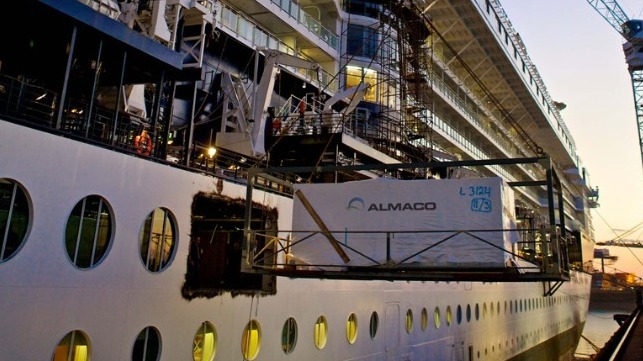Overcoming Challenges with Long Lead Time Materials in Refit Projects

[By Tommi Virta, Project Manager at ALMACO Group]
Modernization projects are typically extremely hectic from the moment when we hear about a potential project. A typical newbuilding project has project phases in the following order: sales and quotation, initiation, planning and preparation, executing, and closing. Modernization projects aren’t traditional standard projects, and therefore this formula doesn’t apply to them most of the time. Modernization projects are more like product development, and it is often necessary to start planning and preparing already during the sales and quotation process. The reason for this is the short preparation time, and long material lead times. In other words, we sometimes need to order certain materials before we even have a contract, but almost always order certain materials before we have any completed official design available.
Five most common delivery challenges with long lead time materials
1. Wall panels: The wall panel factory has to order the foil and can manufacture the panels only after they have received those foil rolls. Before they can order the foil, they will need to know the square meters for the entire batch, meaning that we need to know how many panels we need. After that, they will order the foil, which can have 4 – 6 weeks lead time plus shipping to their factory. Panel production can also have about 4 – 6 weeks lead time after they have received the foil.
2. Wallpapers, fabrics, and laminates: The challenges with these materials are usually the minimum quantity or IMO approval and the long lead time. Some of these can a minimum order quantity of 1000 meter, which can be a lot more than the amount needed. Suppliers are also continually updating their product catalogs, meaning the specified wallpaper/fabric/laminate might not be available anymore, or it might not be available as IMO approved. These can easily have 10 weeks lead time.
3. Doors: Ship door manufacturers have been dealing with full order books for the last years, so any door on the market can easily have 8 – 12 weeks lead time. Door manufacturers also often require everything to be 100% clear before they are willing to insert that door set into their production system. In some cases, these doors can require foil or laminate surfaces, increasing the lead time because the factory has to wait for the foil or laminate to arrive before they can start or finish the production.
4. Wet units: There aren’t many modular wet unit manufacturers globally, and they have all been dealing with full order books lately. In a project where we need to design a new wet unit, the lead time can be very long, and we often need to revise the PO with the wet unit manufacturer when the design is completed. These can easily have 12 weeks lead time.
5. Fixed furniture: The problem with this is the laminate. The furniture factory has to receive the laminate before they can start the production, and after that, the lead time can be 4 – 6 weeks.
What to do to avoid these problem?
The worst that can happen is that materials won’t arrive at the site phase on time. We are not able to change the actual lead times or how the factories operate, but we can change the way we work around these problems. If you are aware of potential problem already during the quotation phase, highlight it to the customer. Propose alternatives if you realize that some of the materials are impossible to get already before the quotation. During the design phase, you can make the problem transparent to the customer’s designers and tackle the long lead time items with improvised design methods in a more agile way. Also, make sure to set exact critical path dates for each material and stick to that plan.
By making sure all stakeholders are continuously up to date on the situation and by reacting as soon as possible, a lot of problems can be avoided before they even emerge. Choosing to work with trusted partners and suppliers that have global networks and scalability is usually a good way to ensure the customer and yard receive the materials they chose on time.
The products and services herein described in this press release are not endorsed by The Maritime Executive.
